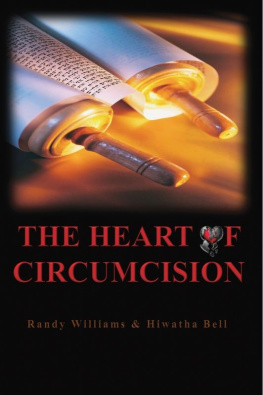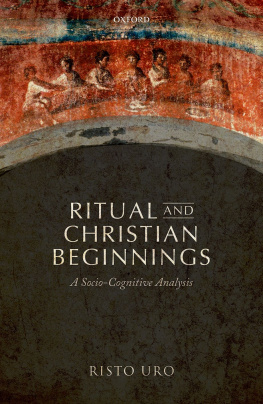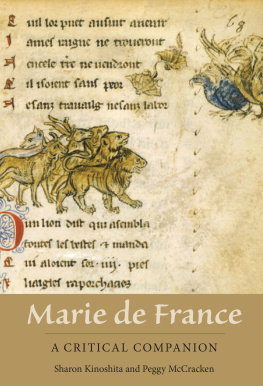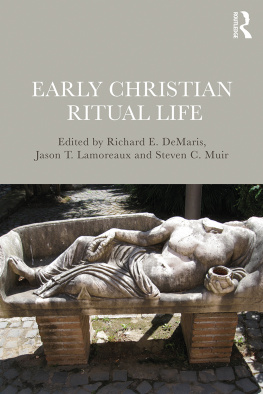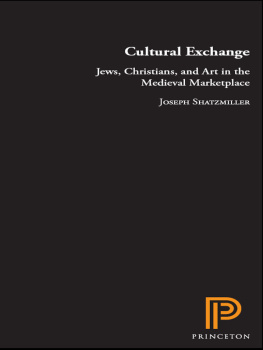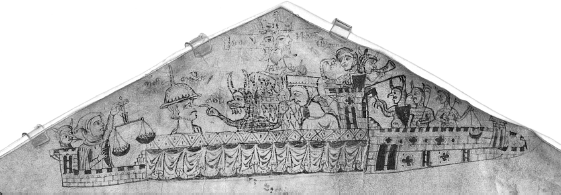
Conversion, Circumcision, and Ritual Murder in Medieval Europe
THE MIDDLE AGES SERIES
Ruth Mazo Karras, Series Editor
Edward Peters, Founding Editor
A complete list of books in the series is available from the publisher.
Conversion, Circumcision, and Ritual Murder in Medieval Europe
Paola Tartakoff
UNIVERSITY OF PENNSYLVANIA PRESS
PHILADELPHIA
Copyright 2020 University of Pennsylvania Press
All rights reserved. Except for brief quotations used for purposes of review or scholarly citation, none of this book may be reproduced in any form by any means without written permission from the publisher.
Published by
University of Pennsylvania Press
Philadelphia, Pennsylvania 19104-4112
www.upenn.edu/pennpress
Printed in the United States of America on acid-free paper
1 3 5 7 9 10 8 6 4 2
Library of Congress Cataloging-in-Publication Data
ISBN 978-0-8122-5187-6
To Daniel, Isaac, Jonah, and Eli
Contents
Note on Usage
In the pages that follow, all translations are my own unless otherwise indicated. I have anglicized the names of people and places, unless the forms in other languages are well known. I have retained original spellings in Latin and Romance vernacular quotations. I have transliterated Hebrew in accordance with the standards of the AJS Review.
Conversion, Circumcision, and Ritual Murder in Medieval Europe
Introduction
In Norwich, England, during the 1230s, Jews were charged with seizing and circumcising a five-year-old Christian boy because they wanted to make him a Jew. The present book examines this unusual accusation, both in the context of this particular case and also as a window onto contemporaneous Christian concerns about Christian apostasy to Judaism. In the process, it investigates the elusive backstory of a tragic show trial, and it analyzes the relationship between Christian constructions of apostasy to Judaism and the realities of conversion and return to Judaism across western Christendom during the high and late Middle Ages.
I use the term conversionwhich scholars have applied to a wide array of phenomena, Including an inner spiritual transformationto denote a public change of religious affiliation undertaken in accordance with the institutional norms of the religious community being joined.
At the same time as this book engages conversion and apostasy as analytical categories, it interrogates and historicizes these and related constructs, which scholars often reify and take for granted. It shows, for instance, that labels such as convert and apostateand even Christian and Jewcould be subjective. For example, according to Christian canon law, an individual who was baptized and who subsequently repudiated Christianity and underwent a formal process of conversion to Judaism was a Christian apostate (apostata), albeit still a Christian. According to Jewish law, however, this same individual was a convert to Judaism (ger) and thus a Jew. According to dominant interpretations of canon law, an individual who was born of a Jewish mother but who subsequently was baptized was a convert to Christianity (conversus) and thus a Christian. According to dominant interpretations of Jewish law, however, he or she was a Jewish apostate (meshummad) and still a Jew. If this same individualwho had converted from Judaism to Christianitylater repudiated Christianity and sought to resume life as a Jew, he or she was a Christian apostate and still a Christian, according to canon law. According to Jewish law, however, he or she was a repentant Jew (baal [m.]/baalat [f.] teshuvah). Beyond the legal realm, popular perceptions of individuals who sought to change their religious affiliation further muddled the meanings of Christian and Jew.
This book demonstrates that even circumcisiona bodily marker of religious identity that typically is assumed to be clear and permanentcould exist in the eye of the beholder. A formal reexamination, years later, of the body of the boy whom Norwich Jews allegedly circumcised produced ambiguous results. According to the examination report, the boy did not appear fully circumcised; his circumcision would not have met Jewish legal standards. Yet, the Christians who adjudicated the Norwich circumcision case, as it came to be known, ruled that the boy was indeed circumcised. Moreover, demonstrating that medieval Christian views of circumcision as the sign par excellence of Jewishness were not constant, these Christians insisted that, In spite of his circumcision, this boy was still a Christian. Navigating unstable constructs through the analysis of a wide array of Jewish and Christian sources, this book seeks to recover the complexity of medieval Jewish-Christian conversion.
The Norwich Circumcision Case
The beginnings of the Norwich circumcision case are unclear. The affair first surfaces in a royal writ from 1231 that declares that a Jew named Senioret ben Josce was banished for circumcising Edward, the son of Master Benedict. The same document specifies that King Henry III seized and granted to Master Benedict a messuage (a dwelling with adjacent lands and buildings) that had belonged to Senioret.
In 1234, Master Benedict, who was a Christian physician, came before the royal court at Norwich. So state the Curia Regis Rolls of King Henry
Figure 1. Exchequer receipt roll, Hilary and Easter terms, 1233. London, TNA, E401/1565 Ml.
Edward, now nine years old, also took the stand in 1234. He told the crowd of onlookers that, In Jacobs home four years earlier, one Jew held him and covered his eyes, while another Jew circumcised him with a small knife. Edward added that, Immediately after circumcising him, the Jews gave him a new name. To choose this name, they placed the bit that they cut off of his member, that is, his foreskin, In a bowl of sand and took turns searching for it with small straws. The Jews renamed Edward Jurnepin after the Jew who uncovered his foreskin.
Circumcision and the bestowal of a new name were both integral parts of the Jewish ritual sequence that brought boys and men into the Jewish fold.
Following the 1234 hearings at Norwich and Catteshall, hearings were held at Westminster before King Henry III, the archbishop of Canterbury, and the majority of the bishops, earls, and barons of England. Meanwhile, other developments were under way. In 1235 and 1238, Christians in Norwich beat Jews and set fire to Jewish homes in outbursts of violence that the circumcision case undoubtedly contributed to fueling.
As a result of this investigation, at least three Jewsthree of the leading moneylenders whom Master Benedict accused in court, Isaac ben Solomon, Theor (probably Diaia le Cat), and Mosse ben Abrahamwere hanged, and their property reverted to the Crown.
Beyond Calumny
In some regards, the Norwich circumcision case was not unusual. It was one of many instances in which thirteenth-century Christians imprisoned and executed Jews on charges of having harmed Christians. Starting in the twelfth century, amid social, political, religious, and economic changes, Christians increasingly marginalized and demonized the Jewish minority that lived in their midst. To be sure, Christians and Jews continued to interact in multiple registers; cooperation, collaboration, and friendship between individual Christians and Jews endured. Mistrust and hostility were on the rise, however, and Jews were increasingly vulnerable. The last decades of the thirteenth century witnessed the first expulsions of Jews from European polities. In 1290, the Jews were expelled from England.
Next page



